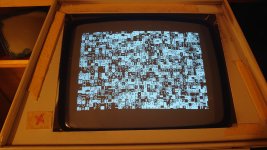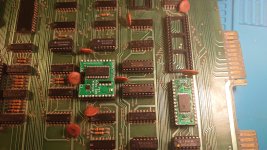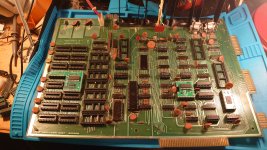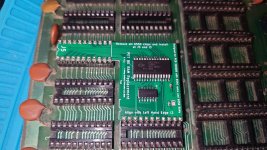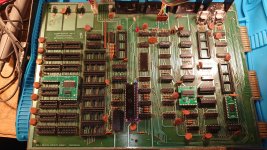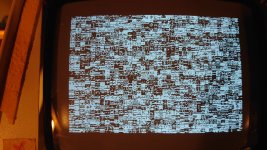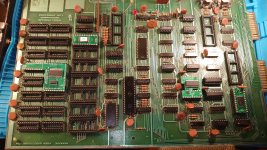RetroGadgetMan
Experienced Member
New buffers have arrived and I decided to take the plunge and bought a video ram, system ram module and a character rom set from Nivag Swerdna.
This would help remove all doubt about my existing rams and character set.
I am yet to replace the buffers, but in trying out the video ram from him I am now getting the following random characters on my vdu, yay!.
I also get the same result with with my other substitute character set so I know that works. So there must be a problem with the substitute rams I bought to use as video ram.
Next thing to do is remove buffers G5 and G6, socket and fit new ones and see what happens.
This would help remove all doubt about my existing rams and character set.
I am yet to replace the buffers, but in trying out the video ram from him I am now getting the following random characters on my vdu, yay!.
I also get the same result with with my other substitute character set so I know that works. So there must be a problem with the substitute rams I bought to use as video ram.
Next thing to do is remove buffers G5 and G6, socket and fit new ones and see what happens.

